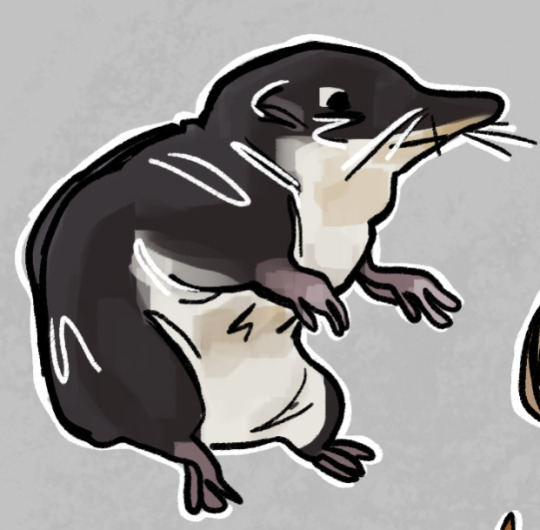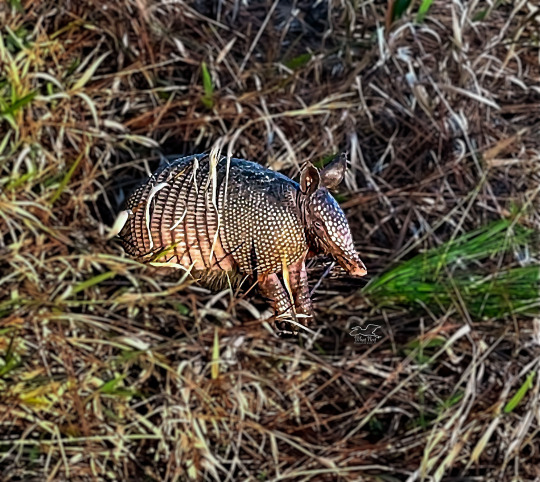#small mammals
Explore tagged Tumblr posts
Text

This delightful image captures a young rabbit resting quietly in the lush green grass, blending seamlessly into its natural surroundings. The soft sunlight filtering through the trees creates a peaceful atmosphere, highlighting the rabbit’s fur and its distinct white tail. This serene moment of wildlife in an urban environment reminds us of the quiet presence of nature around us, even in the most unexpected places.
#Wildlife#Rabbit#Bunny#Nature#Urban Wildlife#Small Mammals#Wildlife Photography#Nature Photography#Colorado Wildlife#MissedMileMarkers
87 notes
·
View notes
Text

While camping at Gold Lake in Plumas County California our camp site was very frequently visited by chipmunks and pine squirrels. Most of the chipmunks were very skittish and scurried through camp, hardly stopping for a second. However, this cute critter stopped on the tree we had our dog Betty tied to. Betty is a 50 pound pit bull cross we’d recently rescued from a shelter when we took this trip. While most wildlife and even domestic cats are of no consequence to her, anything squirrel or squirrel-like drives Betty batty! This one seemed to sense it and tormented the poor K9 from a few feet over her head for several minutes. Since I was sitting in my chair armed with a long lens I figured I may as well capture a shot of the mischievous little critter. In my Etsy shop: https://buff.ly/48jHzML Prints and merch on demand: https://buff.ly/3RzqSqA
#original photographers#photographers on tumblr#northern california#original photographic works#original photography on tumblr#wildlife photography#chipmunk#small mammals#mammals
86 notes
·
View notes
Text

Animal of the day: Marbled polecat! (Vormela peregusna) The marbled polecat is a small mustelid species native to the steppes and deserts of Asia and mountains of southern Europe! Their eyesight is limited and as such they rely on their potent sense of smell to interact with their environment! They normally prey on ground squirrels and mice, and sometimes will eat insects and fruit! Image source: https://featuredcreature.com/marbled-polecat-honey-i-shrunk-your-spotted-hyena/
#mustelidae#polecat#weird animals#aotd#animal of the day#mammals#omnivores#rodents#small mammals#europe#asia#steppes#digger#HE IS THE DIGGER
18 notes
·
View notes
Text
7th of October 2024: American Pika

Today I present you with the American Pika (Ochotona princeps). They are found across Western North America. While they used to be divided up into 36 subspecies, more recent genetic analysis has trimmed that down to 5 [1]. They’re around 15-20 cm in length [2].
They live on rocky mountain slopes, specifically in locations termed “talus patches” [3]. These are just piles of rocks and boulders in which they nest and store food, especially during the winter [2]. They are considered to be very aggressive and territorial, being willing to fight other American Pikas for their territory [4], however they have also been recorded to live in groups, and one time 35 individuals were found within a single talus patch [3].
They’re herbivorous, feeding on plants such as grasses, weeds, and tall wildflowers [5]. They are somewhat selective about which plants they will eat, considering both potential toxins and the nutritional composition (tending towards plants with higher caloric value). Some toxic plants may however still be taken to dry out and keep for the winter, as in this case the toxins will degrade and the plants become edible [4]. They also cache other plants, drying them out in the sun before storing them in their burrows in the winter [5], together with one of the two types of faeces they produce, which they also consume [4].
American Pikas have a very high metabolism and an internal body temperature of around 40°C [4]. This together with their thick fur means they’re prone to overheating, as only 2 hours in 28°C weather may cause them to die [3]. However, the exact risk that climate change poses in this is uncertain, as some research may suggest they’re more resilient than previously thought [1]. Mainly, different American Pika populations appear to react differently, so specific management plans are needed [3].
Sources: [1] [2] [3] [4] [5] [Image]
#critter of the day#critteroftheday#small mammal#small mammals#pika#lagomorph#pika species#animal species#mammal species#zoology#animal#animal facts
15 notes
·
View notes
Note


Hi! I’m new to your blog but the post about your new hamster popped up! I just wanted to say it may depend on whether or not she bites especially if she was or wasn’t actually biting her previous owners for varying reasons.
When I first got Cinder, my Guinea pig shown above, my fam wanted to make sure she was friendly and wouldn’t bite so we asked to be allowed to pick her up. She didn’t try to bite any of us until a day or two after we got her home, that paired with the fact she would run from anyone who approached her by the cage showed it was nervous biting. We (I mostly) worked with her after that and she stopped seriously, like latch on and break skin, biting unless we have to syringe feed her meds or clip her nails, she still nibbles but doesn’t try to break the skin as a sign of “put me down now!”. It also helped that I changed the protocol of how we pick her up by letting her smell and see offered treats and letting her make the decision to climb onto my hand.
"Oh! Last ask note sorry I forgot to mention this, for ornery rodents basket training they helps too for those afraid to pick them up and get bit! 😄 Buy a small pet grass woven basket house and you can carry them in that, on days I want to clean the Guinea pig cage and Cinder refuses to be picked up I set the basket down and put a treat inside and let her amble in.
Also word of advice for new rodent owners or those new to owning prey animals (including Tokay geckos! 🦎), unlike a dog or cat who typically think nothing of a hand coming down from above to pet them; a rodent, lizard, lagomorph, etc can be triggered by this as a hand above them can mimic a bird of prey or other predator coming down from above and trigger an instinctual need to flee or be defensive. Rodents have poor vision, their range is broad but it doesn’t go very far and isn’t as detailed, seeing basic outlines first so patience and adapting your personal behavior, rather than trying to force them to change theirs first to gain trust is key. "
‐-------------------------------------------
I added your second ask to this one so it's all together! Thank you for your comments, this is all very good advice for handling small mammals/critters.
We've done basket/container training for rats numerous times & that's how we handled our previous spicy dwarf ham, Picante. It really helps a lot, especially with a cage aggressive/ territorial critter like Picante was.
I'm still unsure what exactly was the situation in this case, as Gabby came with a nice modified tote set up, lots of appropriate supplies, etc. It seems odd that they would have the handling that far off from the rest of the care. But who knows!
Cinder is very cute, and very lucky to have you for a human!! Thank you again for sharing. 💙
#fbw rambles#my pets#Gabby ham#small mammals#i did know this stuff already BUT it's still great advice and i appreciate you sending it!#and it's great to share for anyone else who might not know#thank you again!
8 notes
·
View notes
Text
9 notes
·
View notes
Text
Mouse the Guinea Pig demanding veggies.
4 notes
·
View notes
Text
I'm curious, this looks fun.
35 notes
·
View notes
Text

Sister Borgia Knelleken in the Animal Laboratory at St. Cloud Hospital, St. Cloud, Minnesota
Because Sister Borgia was willing to take on any task asked of her, she responded to Dr. Page E. Stangl's (pathologist) request to help him set up a laboratory of animals for research. She called herself the zoo-keeper and worked with this project in her quiet, unassuming way for 39 years--first in crowded conditions among the offices on 6th floor of the hospital and then in the seclusion of the sub-basement.
Saint Benedict's Monastery
4 notes
·
View notes
Text

Lowland Streaked Tenrec
Native to Madagascar
14 notes
·
View notes
Text


bless their hearts
#shrew#shrews#animals#small mammals#eulipotyphla#insectivore#digital art#my art#artists on tumblr#extravagances
13 notes
·
View notes
Text

#Wildlife#Nature Photography#Rabbitblr#Bunny#Animal Photography#Nature Lovers#Small Mammals#Colorado Nature#Urban Wildlife#MissedMileMarkers
56 notes
·
View notes
Text

A Pine Martin, A vicious meat eatter with cute little ears.
📸 Derek Diehl Photography
https://derekdiehlphotography.smugmug.com/Small-mammals/Smallmammals/
5 notes
·
View notes
Text
Armadillos Don’t See Well, but They Have a Great Nose
Taking a Break On one of my recent trips to Watermelon Pond a pretty little nine banded armadillo (Dasypus novemcinctus) found me. I was hiking through the woods towards the water when it happened along. I say it found me because it came out of some heavy underbrush into the more open area where I was walking. It looked around, never saw me, and began to follow its nose around in search for some…

View On WordPress
#armadillo encounters#armadillo photographs#armadillos#Florida armadillos#Florida mammals#Florida small mammals#interesting mammals#mammal photographs#mammals#nine banded armadillos#North American armadillos#photography#small mammals#unusual mammals#wild mammals#wildlife#wildlife photographs#wildlife photography
2 notes
·
View notes
Text
1st of October 2024: Least Horseshoe Bat

October has officially begun, and what better way to start than with a bat, specifically the Least Horseshoe Bat (Rhinolophus pusillus). They are one of the smallest horseshoe bats in the world [1], having a body length of only 3-4 cm [2], and are mostly from South East Asia [3].
Their species actually encapsulates many different populations including those who used to be believed to be different species, such as R. monoceros in Taiwan or R. cornutus in the main islands of Japan. They are also morphologically (as in shape-wise) similar to R. hipposideros in Europe, but unlike for the other ones, this is more likely to be convergent evolution, as opposed to coming from close genetic lineages [4].
They are insectivores, mostly feeding on flies and moths [5]. They’re from moist forests, and are in their largest flocks in caves, with groupings of up to 1500 Least Horseshoe Bats having been recorded roosting together. They may also be found in houses, though in that case obviously in smaller groups [3].
They do hibernate, with their hormonal production switching around to give them higher resistances to viruses, which bats in particular require. The exact changes may be as specific as to vary with only 5°C differences in different microclimates, depending on whether they are hibernating in a mine or in a canal [6]. Their echolocation calls also vary with climate, with those populations living in areas with heavier rainfall having higher pitched calls [1].
Sources: [1] [2] [3] [4] [5] [6] [Image]
#critter of the day#critteroftheday#bat#small mammal#small mammals#bat species#horseshoe bat#animal facts#animal#zoology#animal species
4 notes
·
View notes
Text

After 4 years, I finally found Spoon somewhere that wasn't his hammock, rock cave, or wheel!! How is he so cute? 💙
#petblr#lesser tenrec#exotic pets#small mammals#my pets#animal pics#spoon tenrec#just a little man#he's been boycotting his kibble for like 4 days#hoping he ate last night after i opened a new bag#the deal is he only gets insects every other day IF he eats his kibble well#he's always been pretty good at cooperating with that#some tenrecs will decide it's bugs or bust which is very hard to balance properly
55 notes
·
View notes